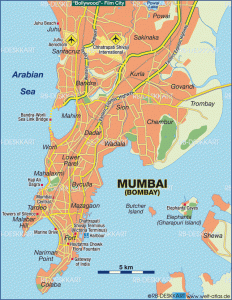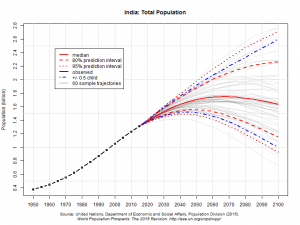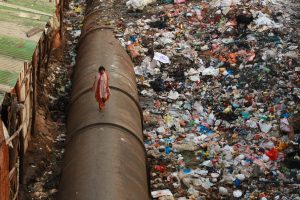“Managing water supplies so they become neither depleted nor polluted, and providing good sanitation, are central to the health of communities and the environment on which they depend (Irish Aid 2007).”


At a Glance:
- Population: estimated as high as 22 million people
- Density: estimated as high as 21,000 people / square kilometer
- Largest City in India
- Ninth largest urban center in the world
- Financial, commercial, and entertainment hub of India
- Wealthiest city in India
- Highest GDP of any city in South, West, or Central Asia
- India is second only to China in numbers of people lacking access to sanitation (Irish Aid, 2007).
* population and economic statistics from (Press Information Bureau, Government of India, 2011).
Slum Sanitation:
While Mumbai is home to the highest number of millionaire and billionaires in India, it is at the same time also home to some of the poorest residents in India. Problems of sanitation have become issues in Mumbai due to the rapid rate of urbanization in recent years. Urban growth is happening disproportionately in slums, with large numbers of new migrants to Mumbai coming to these already dense and resource stretched areas.
- 41.3 % of Mumbai’s population lives in slums (World Population Review, 2016).
- Dharavi is the third largest slum in the world home to an estimated 1 million people
- Dharavi has a population density of over 277,136/km2, making it one of the most densely populated places on earth (Jacobson, 2007).

Geography:
Dharavi’s location in particular makes it especially susceptible to problems of sanitation. The open sewers in the city drain into Mahim Creek, a local river that is widely used by local residents for urination and defecation causing the spread of contagious diseases (Jacobson, 2007).


Challenges to Urban Sanitation in Mumbai:
Sustainable sanitation in Mumbai is not only a question of building more toilets, but is a complex environmental and social issue with legal, institutional, and political challenges to overcome.
- Lack of sufficient infrastructure for a growing population
- Failure (until recently) of the government to prioritize sanitation.
- Disconnect between slum residents and formal political channels.
- Cultural barriers
- The caste system: As by tradition it was only the lowliest in society, “untouchables”, who cleared human waste (The Economist, 2014).
- Hindu Tradition: seen for example in the “Law of Manu” a Hindu text that encourages defecation in the open to avoid ritual impurity. Research does show that Hindu populations have higher rates of open defecation in India (The Economist, 2014).
- Inadequate sanitation is highly costly. It is estimated that inadequate sanitation cost India $54 billion (64% of GDP) in 2006. 70% of this was health related (Kumar, 2011).
- A reluctance to acknowledge the home and individuals as equally important as public institutions in fixing problems of sanitation and fighting the disease transmission in the community (Nath, 2003).
- Policies that have attempted to clean up the slums have often made it harder for many families to access clean infrastructure due to increasing pricing of facilities (Desai, 2016).
There is a need for a thorough, context specific ‘Southern’ approach to understanding the problem of sanitation if solutions are to come. National water policies are shifting to community-based management approaches. The local context allows for more efficient and effective responses and local institutions and groups are better equipped to solicit local participation (Bhatt, 1995).
Previously Proposed Solutions:

The Slum Sanitation Program (SSP):
National governments on both political spectrums continue to highlight the importance of making India “open defecation free” by adding and maintaining more public toilets (Shannti Dinnoo, BBC, 2014). The SSP is an example of a bold initiative that showed some of the major challenges faced with dealing with the issue of sustainable sanitation in Mumbai.
The SSP was:
- Implemented between 1996-2005
- A World Bank aided initiative
- Led by NGOs and community-based organizers
- Part of the Mumbai Sewage Disposal Project (MSDP)
- An implementation by The Municipal Corporation of Greater Mumbai (MCGM). The objective of the MSDP is to provide a healthier and improved environment for the citizens of Mumbai while minimizing the impact of wastewater on the natural environment
Approach:
- Constructed 328 toilet blocks consisting of 5100 toilets which helped approximately 400,000 slum dwellers
- Participatory
- Demand-responsive
Aim:
- “Improving the health and environmental conditions in Greater Mumbai including slum dwellers”
Why it failed:
- Skewed land ownership
- Government policy towards land ownership and sustainable slum sanitation
- Needs reforming
- Government policy towards land ownership and sustainable slum sanitation
- Membership fees
- Required families to pay-per-use or purchase monthly pass
- Vast majority not willing to pay
- Required families to pay-per-use or purchase monthly pass
- Location
- Access to toilet blocks
- Led to challenging operations
- Led to unreliable maintenance
*Information regarding the SSP from (Water and Sanitation Program [WSP] – South Asia, 2006)
The SSP showed gradual improvements throughout its history but in order to really tackle the enormity of this issue in the future, drastic initiatives must be made by governments that keep up with the rising population of not just Mumbai, but all of India.
References:
Bhatt, M (1995). Women in Water Management: The Need for Local Planning. Development in Practice. https://www.ncbi.nlm.nih.gov/pubmed/12346425
Desai, Renu; McFarlane, Colin; Graham, Stephen; University of Durham (2016). Everyday Sanitation: A Comparative Study of Mumbai’s Informal Settlements. Durham University. https://www.dur.ac.uk/geography/everyday_sanitation/
Irish Aid ( 2007) Environment, Water and Sanitation. International Institute for Environment and Development. https://www.irishaid.ie/media/irishaid/allwebsitemedia/20newsandpublications/publicationpdfsenglish/Environmental-key-sheet-11-water-sanitation.pdf
Jacobson, M (2007). Dharavi. National Geographic. http://ngm.nationalgeographic.com/2007/05/dharavi-mumbai-slum/jacobson-text
Kumar, G. S., Kar, S. S., & Jain, A. (2011). Health and environmental sanitation in India: Issues for prioritizing control strategies. Indian Journal of Occupational and Environmental Medicine. 15(3), 93-96. https://www.ncbi.nlm.nih.gov/pmc/articles/PMC3299104/
Municipal Corporation of Greater Mumbai. (2016). Mumbai Sewage Disposal Project. http://www.mcgm.gov.in/irj/go/km/docs/documents/Tenders/ETH/ETH_07061634_290816.pdf.
Nath, K. (2003). Home Hygiene and Environmental Sanitation: A Country Situation Analysis for India. International Journal of Environmental Health Research. https://www.ncbi.nlm.nih.gov/pubmed/12775376
Press Information Bureau, Government of India (2011) INDIA STATS : Million plus cities in India as per Census 2011. http://pibmumbai.gov.in/scripts/detail.asp?releaseId=E2011IS3
Shannti Dinnoo. (2014). Why do millions of Indians defecate in the open? BBC. http://www.bbc.com/news/world-asia-india-27775327.
Water and Sanitation Program (WSP) – South Asia. (2006). The Mumbai Slum Sanitation Project. https://esa.un.org/iys/docs/san_lib_docs/WSP-Mumbai.pdf.
World Population Review (2016). Mumbai Population 2017 http://worldpopulationreview.com/world-cities/mumbai-population/https://www.ncbi.nlm.nih.gov/pubmed/12775376
United Nations – Department of Economic and Social Affairs. (2015). Graphs. http://www.mcgm.gov.in/irj/go/km/docs/documents/Tenders/ETH/ETH_07061634_290816.pdf.